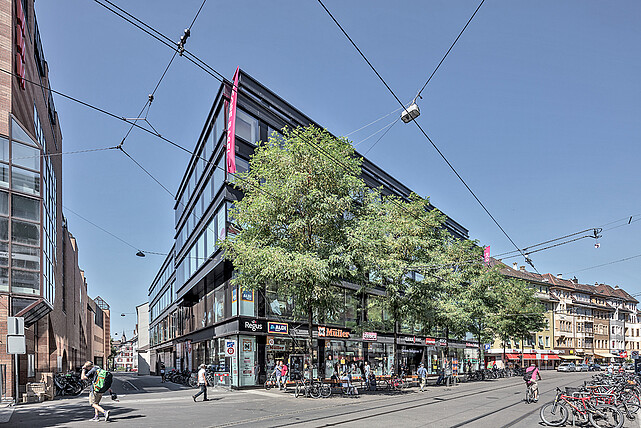New mobility concepts are being thought up, evaluated and trialled in a number of towns and cities. All of these concepts share the same goal: banishing motorised traffic from urban centres and creating more room for non-motorised traffic as well as public spaces. Do these concepts represent the final straw for high street stores that are already struggling? An analysis.
A successful retail business requires regular custom, good footfall, and an appealing environment in terms of both the quality of the surroundings and what is on offer nearby. The question of whether customers make their way to the shops by car, by electric scooter or on foot is irrelevant. Shoppers' personal preferences regarding how they get to the shops, however, are crucial. Some prefer going by bike or with a shopping trolley, while others value being able to stow their latest purchases quickly and conveniently in their car in order to then be able to embark on more shopping adventures. It is essential that consumers are given the freedom to choose.
Let's say that an area covering from Zurich's main station to the lakeside, from Bellevue to Central and from Langstrasse to Enge station were to be made car-free. Only non-motorised traffic would be permitted in this zone, with the exception of store deliveries and electric taxis. The zone only covers a small area of 1.6 square kilometres. The space freed up on the roads could be used for parks, unloading areas for non-motorised traffic, and public transport. In this idyllic setting, a new oasis of well-being would be created for people who would like to take a break from their hectic everyday lives and also limit their impact on the environment. But what would drivers do?
The aim is to create the ideal conditions to ensure that shopping remains a pleasant experience. Various different Swiss towns and cities have already developed a range of mobility concepts that analyse existing retail situations and identify potential solutions for reducing inner-city traffic. At the end of 2017, for example, the City of Zurich published its "Transforming Retail" study on the retail sector, which sets out a variety of different future scenarios. But that doesn't go far enough. What about creating generous and affordable parking facilities at the edges of these car-free zones? This would make a (free) delivery service to customers' homes or to those car parks obligatory for every store. Motorised traffic would need to be intelligently guided around the area using new infrastructure such as a ring road, underwater tunnel or similar construction projects in order to organise traffic for the long-term future. There must be many different ways of accessing the car-free zone. Facilities must be offered to meet every requirement so that it is also possible to access individual locations. The aim must be to bring about a situation in which shoppers do not need their cars, and can enjoy the experience of dipping into the car-free zone.
The new overall experience this creates when visiting urban centres would boost the frequency of visits. People would spend more time strolling around public spaces, sitting in cafes, shopping, and playing on playgrounds. This would ensure customer footfall, and retailers' revenues would stay at the same level even without direct access for motorised traffic. Examples in the Netherlands show that these kinds of mobility concepts can work. The city of Groningen, for example, was divided into four sectors at the end of the 1970s, and motorised traffic between the sectors was severely limited. A completely car-free concept was also developed and implemented in the 1970s for Houten, a municipality near Utrecht that now has 50,000 inhabitants. Cars can only travel around the town on a ring road.
In my view, however, a new mobility concept for a Swiss town or city requires the various different measures to be implemented at the same time, and the rows of high street stores to remain open during the remodelling. In order for this to work out, solutions need to be found and implemented for traffic flows, small-volume logistics, parking and access facilities. This challenging task is the responsibility of the authorities, municipalities and town planners, and calls for careful preparation, planning and finance with help from selected specialists. If Switzerland launches this kind of concept for the centres of its towns and cities today, this will benefit the next generation. Finally, tourists are also curious to see innovative metropolises. In Switzerland, Zurich is in the best position to shine in this regard as a pioneer.


